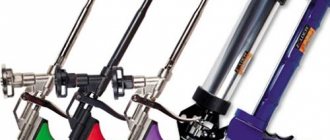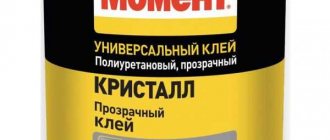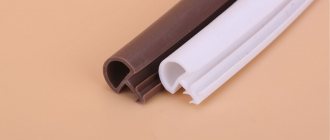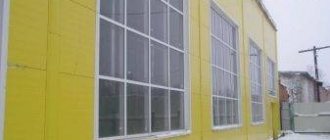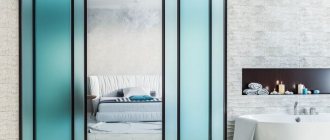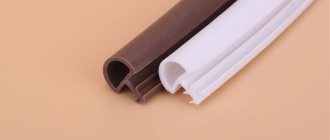Fastening of various building materials is often done using adhesive solutions. For different purposes, a huge number of compositions have been developed, which differ in application method, quality and constituent substances. A universal tool among adhesive options can be called Moment Montazh liquid nails. Even in this line there are many types, in order to choose the right glue, you need to understand the characteristics of the varieties. This will be discussed in detail below.
Purpose
Construction adhesive “Moment Installation” is used for the following purposes:
- for installing mirror bases on different planes;
- for attaching PVC panels;
- to attach shelves and decorative structures to any base;
- for fastening tiles.
The glue is waterproof, which allows it to be used in conditions of excessive dampness. They can be used to glue tiles or mirrors in bathrooms, showers, swimming pools, kitchens, etc.
How to work
Liquid nails are sold in tubes or special tubes. To work with tubes, you need to purchase a special construction gun for sealant (that’s what sellers call them).
Tool
There are sealant guns:
- Open, semi-case and case (closed);
- Mechanical and pneumonic.
The most acceptable option for use in household repairs is a semi-body mechanical gun.
Related article: Kitchen renovation from a photo: analysis of an 8-meter kitchen renovation in a panel house
It is more convenient to work with a closed mechanical gun.
Before applying liquid nails, you must prepare the surface. Remove dirt, dust, and old sealant.
If you work with metal, be sure to remove rust and also degrease the material.
The glue is applied to one or both surfaces (read the instructions on the package). The glue is applied dotwise, in a snake or in stripes.
The thickness of application depends on the type of glue chosen. Let me remind you that water-based adhesives cannot be applied in a thick layer.
Typically, glue is applied to the product being glued. When gluing, for example, an apron wall panel to a kitchen wall, the apron is gently pressed against the wall. Displacement of the apron along the wall is unacceptable.
Liquid nails set, usually in 10-15 minutes, but there are options for 40 minute setting. While the nails are setting, it is better to press the product to the surface. It is enough to press the product with your hands for 2-3 minutes, then place emphasis or press it with a load.
It is especially important to press down on a product that is glued to the ceiling, such as ceiling tiles.
Adhesives dry within 12-24 hours. Manufacturers indicate a more precise period required for drying on the packaging or in the instructions for this product.
A large number of brands of liquid nails with basic and additional properties force us to give advice:
Types and composition
Based on synthetic polymers
Additional components are solvents of organic origin, which explains the pungent aroma. Liquid nails react with plastic and PVC, so it is not recommended to connect surfaces made of these materials.
The marking on the products of this group is “MR”, it is placed on the packaging. Synthetic compounds are highly durable and resistant to moisture. Due to easy flammability, use of the product near open flame is prohibited.
Acrylic based
The marking indicated on the container is “MB”. They are neutral in composition, so they are suitable for work inside the house. Usually they install baseboards, fillets or PVC tiles.
Manufacturers of products display all information about the composition, main qualities and types of materials that can be glued together on the packaging and official website.
How to remove protruding adhesive
When working with glue, it may get on the front part of the parts being fastened. In this case, the drops must be quickly wiped away. It is better to do this with a cloth soaked in a solvent containing acetone. It is suitable for all types of liquid nails, but still gives a subtle result, so do not over-tighten. If the composition has already dried, then the solvent will only help in conjunction with mechanical cleaning. A good result is obtained by heating the frozen glue using a regular or construction hair dryer. When the surface temperature rises to 50-60C, the nails become softer, which makes them easier to tear off.
If liquid nails get on your clothes, this does not mean that you have to throw them away. Anti-glue can be used to clean fabric. Although on glued objects, where glue is used in a thick layer, this solvent is ineffective, but on clothing it can often cope with the task. The disadvantage of this method is the ability to change the shade of the fabric. For sensitive items, it is better to first warm up the nails with a hairdryer or iron, and then put the clothes in the freezer. As a result of a sudden change in conditions, the glue will lose its properties. Once frozen, it will be possible to peel it off. This is a good method, but it is ineffective on knitted items.
If you need to clean your hands that are stained with acrylic-based glue, you just need to wash them with soap. Formulations with artificial rubber are washed off the skin with Vaseline or vegetable oil. Considering all the difficulties with cleaning, it is much easier when using liquid nails to protect the edges of the parts with masking tape, so as not to have to scrub anything off later.
Stamps
Glue Moment “Liquid Nails” is produced in 16 variations. Each has its own adhesive strength, differs in composition and is designed for a specific material.
Express MV 50
Universal assembly adhesive, does not contain solvents, used for joining wood, PVC, insulating boards. You can plant baguettes, door jambs, and decorative elements.
“One for everything. Super strong"
Manufactured using Flexec technology. Plastic, monocomponent, has a high adhesive force, so it can be used to glue heavy and large elements. They can work on any surface with any porosity, seal cracks, and seal.
Moisture accelerates the hardening of the joint, so it can be used in rooms with high dampness. They can be used to connect natural stone, concrete, brick. The product is not used for working with glass, copper, brass and PVC.
“One for everything. Transparent"
It has the advantages of the previous brand, it helps to seal seams in water, but not in conditions of constant immersion. Shelf life: no more than 15 months.
Glue Express Decor
White acrylic composition. Quickly glues any materials, but maximum adhesive ability is achieved with hygroscopic surfaces. Suitable for fixing decor.
“Moment Montage. Waterproof"
It belongs to moisture-resistant products of class D. This is a universal composition marked MB-40. They can firmly glue any materials.
"Super strong MVP 70. Transparent"
Due to the gripping force of 70 kg/m. sq. quickly glues any materials. Typically, wall panels and interior design elements are mounted on it. There is also a white composition.
"Superstrong Lux MV-100"
It has the qualities of the previous brand, but its adhesion force is 100 kg/m. sq. To glue heavy elements to them, there is no need to use supports or clamps.
"Extra-strong MP-55"
It is made on the basis of rubber. They can be used to glue heavy objects of any texture. After application, it forms a thin film that is dry to the touch, protecting the bonded surface from contamination.
The strongest adhesion occurs at the first contact of the surfaces during the destruction of the protective shell, so it is not recommended to move the working elements after bonding.
Universal mounting mixtures based on polyacrylates
All these mixtures have a common property - odorlessness and anti-allergic qualities. Compositions of this type are not intended for gluing Teflon and polyethylene. To obtain a strong connection, it is advisable to use compounds for gluing two surfaces, one of which is capable of absorbing glue. They have similar areas of application and shelf life (18 months). They differ in packaging volume and speed of initial setting.
The compositions are available in white or transparent. This depends on the type of polyacrylate isomers used in the mixture. Information about color is already contained in the names of this or that product in this series.
Installation Superstrong MVP-70 is a white pasty mass. Available in tubes for a plunger gun weighing 400 g. It has a high degree of initial setting (70 kg/m²). The time before intensive polymerization begins after application to the surface is up to 15 minutes.
Superstrong adhesive MVP-70 is used for gluing wood (wall panels), ceramics, foam plastic (curly ceiling cornices, baguettes). It can withstand heavy loads, so it can even be used to glue heavy solid wood panels. Moment Superstrong MVP-70 can be used both for interior work and outdoors. This glue does not decompose or depolymerize over time.
The Henkel company produces acrylic adhesive Superstrong Plus with increased primary strength, up to 100 kg/m². The manufacturer allows the possibility of using this composition for installing door blocks.
Moment Superstrong Plus MV-100
Compositions Express MV-50, Express Decor MV-45 are specially designed for finishing work. With their help, you can quickly install friezes, baseboards, and other decor. The initial adhesion force of the compounds is lower (45 kg/m²), so they are used for gluing light objects. Available in 250 g tubes or 450 g cartridges.
Express Decor
Specifications
Rubber based
| Compound: | Contains toxic volatile substances that give the glue a pungent odor, so when working with it you need to carefully ventilate the room. |
| Special Features: | Moisture resistance, frost resistance (operating temperature can reach -40 °C) |
| Color: | Flesh color, there are white and colorless models. |
| Application: | Installation, but can be used as a sealant. |
| Type of glued material: | Almost anyone. |
| Type of bonded surfaces: | Better glues smooth surfaces that do not absorb moisture. |
| Drying time: | Some varieties can dry instantly. The average working time, depending on the brand, can be 10-30 minutes. It sets within a day, and liquid nails dry completely in a maximum of 7 days. |
| Operating temperature: | -12… +35 °C |
| storage t°C: | From -20 to +30 °C, fully restored after defrosting. |
| Solvent: | White Spirit. |
| Expiration date: | 1.5-2 g. |
| Consumption per 1m2: | Depends on the brand. |
| Release form: | Cartridges, tubes. Weight 0.125-0.4 kg. |
Water based
| Compound: | Does not contain toxic substances, no pungent odor. Has great gripping force. |
| Special Features: | Water resistance, frost resistance (up to -20 °C) |
| Color: | White, colorless after drying. |
| Application: | For installation indoors and outdoors. |
| Type of glued material: | Various materials. |
| Type of bonded surfaces: | The surface must absorb moisture. |
| Drying time: | The working time of the train is 5-15 minutes. When completely dry, you can paint with acrylic paints. |
| Operating temperature: | +5… +30 °C |
| storage t°C: | From +5 to +30 °C |
| Solvent: | Excess glue can be easily removed with a damp sponge. |
| Expiration date: | 18 months |
| Consumption per 1m2: | Depends on the brand. |
| Release form: | Cartridges, tubes. Weight 0.125-0.4 kg. |
Adhesives Moment Installation based on synthetic resins
These mixtures are produced by the company's factories located in the United States. Composition Extra-strong MP-55 contains phenol and aliphatic hydrocarbons, so be sure to follow safety precautions, as the composition is flammable and the vapors are hazardous to health. Suitable for quick and durable gluing of any materials and their combinations, however, due to the solvents contained in the composition, it is not used when working with polystyrene foam.
Due to the above characteristics, the main area of application of the glue is outdoor work. It is also used for installation of facing panels and tiles. The adhesive strength increases as the glue polymerizes. Primary – 55 kg/m², final – 70 kg/m². Available in tubes of 423 g.
Extra-strong MP-55
Instructions for use
During work, you must follow safety rules.
Before starting gluing work, you need to clean the surfaces from dirt and foreign objects, sand them, then degrease them. The materials to be bonded must be at room temperature.
The optimal air temperature for work is +10 °C and above. Some types of polymer adhesives can be used at subzero temperatures.
If the glue is in the form of a cartridge, then before use you need to cut off the protective seal and put on the cap. The end of the cap is cut at an angle of 45° to the desired diameter.
Next, the cartridge is installed in the construction gun: press the locking tab, pull the rod towards you, insert the cartridge into the gun body, push the rod back until the disk stops at the bottom of the cylinder.
Make several idle trigger presses until the glue starts to come out. To stop feeding, press the locking tab. This movement reduces the pressure of the compound inside the cartridge.
Principle of operation
To get started, you need to install the tube (the container in which the glue or sealant is located) into the gun body. To do this, press the lever and pull out the piston. Then, insert the tube into the free space and press the rod all the way, while simultaneously holding the rear lever with your finger. After this, we cut the tip at an angle of 45 degrees and begin gluing.
The operating principle of the pistol is very simple. When the trigger (rear lever) is pressed, the rod moves and squeezes the glue out of the gun. The glue comes out of the tip of the device. After finishing work, close the tip with a cap and hide the device until next time.
The photo shows a liquid nail gun
Adviсe
- It is better to use a construction gun to apply the product. It can later be used to work with sealant.
- If work is carried out on newly constructed concrete walls , then it is better to postpone this for at least a month to allow the surface to dry and the concrete to set.
- If you plan to glue PVC panels to painted walls , they must first be sanded. If the surface does not absorb moisture well, then it is better not to use acrylic nails or to prime the surface first.
- To increase the adhesive properties of expanded polystyrene , it is first coated with wood glue, which is diluted with water 1 to 1. After drying, you can begin to apply the glue.
Complete curing of the composition requires from 12 to 24 hours; during this time it is not recommended to load the glued surfaces, so as not to reduce the quality of the gluing.
Extrusion from a gun
For a large amount of work, it makes sense to use a special gun, which will reduce product consumption and facilitate the application procedure. The principle of operation of pistol devices is similar to syringes; the entire body or half of the tube body can be inserted into the pumping structure; sometimes it looks like a skeleton on which a packaging container with glue is fixed.
The easy-to-use models feature reverse motion, which significantly speeds up gluing, which is especially important in industrial environments. When constantly performing large volumes of work with adhesives, it makes sense to use a gun that runs on electricity.
The technical features of the units are indicated in the accompanying instructions, the reading of which should not be neglected.
Is it possible to make liquid nails with your own hands?
On the Internet you can find descriptions of many ways to make glue with your own hands, using only available objects and products. Will such a composition perform its functions? It is unlikely that it will compare in characteristics with “liquid nails Moment Installation”, manufactured industrially.
When creating “liquid nails”, components are used that cannot be purchased, and it is impossible to reproduce the manufacturing technology at home. You can try to glue small objects together with homemade glue, for example, a broken toy, but you should not use them for household repairs and construction.
It is closest to “liquid nails” in terms of the method of applying hot-melt adhesive in the form of solid rods, which are inserted into a hot-melt gun and melt under high temperature. If “liquid nails” are not available, then hot melt glue can replace them in some cases.
What it is
When purchasing liquid nails, not everyone reads the instructions for use. The material is so widespread and accessible that it seems that there are no surprises to be expected from it. But this is not so, since the general name hides several solutions with different characteristics. In the original version, the glue consisted of artificial rubber with the addition of polymers.
When it first appeared, especially plastic clay, which was mined in Texas, was used as a fine filler. Since such raw materials could only be used in America, and the adhesive composition turned out to be successful, experiments began with other additives. Thanks to this, many varieties of the product appeared, but the name remained.
Instagram positive_magazin_krasok
The range of liquid nails is very wide. The general name hides several solutions with different characteristics.

